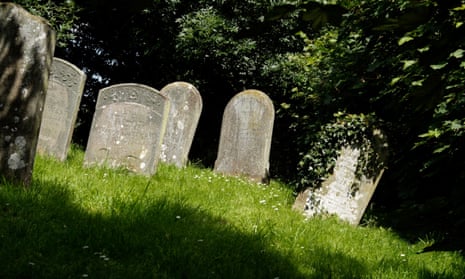There are thousands of wild plant sanctuaries across Britain, many in the hearts of villages, towns and cities, but they’re often ignored and forgotten. Cemeteries, churchyards and burial grounds have almost become nature reserves.
Some of the most ancient sites have been around for over 1,000 years, and many grounds haven’t been assaulted with chemicals or intensive management – tighter spending has actually helped even more by cutting back on over-management. And so these sites have become refuges for a tremendous range of plants, including some of our most threatened grassland plants and old trees, mosses, lichens and flowers, as well as wildlife.
Gravestones are often splattered with colourful lichens that look like ink blots, powdery crusts or leafy vegetation. More than 300 species of lichen have been recorded in churchyards in lowland England, and some churchyards have well over 100 species, half of them rare. Ferns also colonise old, damp churchyard walls, including maidenhair spleenwort and black spleenwort.
Many burial grounds have become some of the best places to see wild meadow grasses and flowers, such as sweet vernal grass, ox-eye daisy, common poppy and yellow rattle. When the grass is short, it allows orchids to thrive, as well as bird’s-foot trefoil – also known as “eggs and bacon”. And many old churchyards have ancient yew trees, some dating back to pagan times.
The surprising thing for such magnificent refuges is how little is known about their plant and animal life. That’s why the non-religious charity “Caring for God’s Acre” is launching a project to encourage biological recording in burial grounds, and they are looking for volunteer recorders from the public.

Comments (…)
Sign in or create your Guardian account to join the discussion